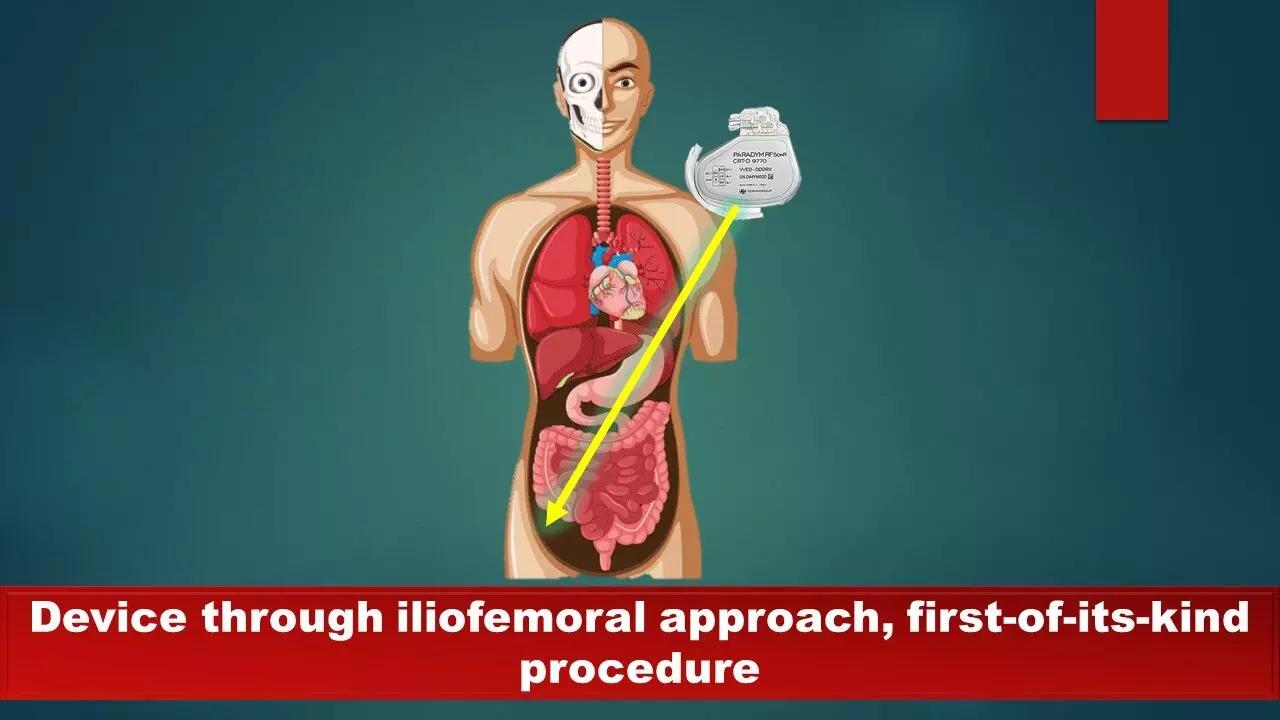CRT In "Buttocks": Rare Approach For Complicated Scenarios
- byDoctor News Daily Team
- 05 August, 2025
- 0 Comments
- 0 Mins

A case report published by Chousou et al in European Heart Journal represents the first reported case of an octogenarian female who underwent cardiac resynchronization device therapy via iliofemoral route for managing refractory heart failure. Conventional approach via upper limb veins was unsuitable as she was on haemodialysis via a combination of left-sided fistula and right-sided tunnelled line. CRT through iliofemoral approach was the only bailout option deemed fit for the patient.
An 89-year-old female with severely impaired left ventricular function (ejection fraction biplane 27%) due to coronary artery disease, diabetes, and end-stage renal failure on haemodialysis, experienced repeated hospitalization due to heart failure decompensation. Electrocardiogram demonstrated sinus rhythm with broad left bundle branch block (QRS duration 158 ms). Biventricular pacing was considered, but conventional approach via upper limb veins was unsuitable as she was on haemodialysis via a combination of left-sided fistula and right-sided tunnelled line. She was initially managed conservatively, as it was felt her comorbidities and vascular access concerns meant exposing her to the risks of complex device insertion was not in the patient's best interest.
Symptoms became intolerable and, after further hospitalization, she was admitted for implant of biventricular pacemaker via the iliofemoral route. Access was achieved using the right femoral vein. Active-fixation leads were positioned in the right atrial appendage and right ventricular apex with good stability. Coronary sinus venogram demonstrated suitable lateral and posterior veins.
A quadpole active-fixation left ventricular lead was placed in mid-lateral position with good threshold and stability. The generator was placed in a right lower quadrant pre-rectus pocket. Fluoroscopy and chest/abdominal radiograph post-procedure demonstrated stable position of the leads.(Figure) The patient noticed a dramatic improvement in her symptoms and remains free of heart failure hospitalization over 18 months later.
"Older age, multi-morbidity, and limited venous access need not mean patients should not be offered complex procedures. This is the first published report describing the use of an active-fixation quadpole left ventricular lead in this context, which undoubtedly aided in achieving a good outcome", concluded the authors.
Source: European Heart Journal - Case Reports, Volume 5, Issue 3, March 2021, ytab063, https://doi.org/10.1093/ehjcr/ytab063
Disclaimer: This website is designed for healthcare professionals and serves solely for informational purposes.
The content provided should not be interpreted as medical advice, diagnosis, treatment recommendations, prescriptions, or endorsements of specific medical practices. It is not a replacement for professional medical consultation or the expertise of a licensed healthcare provider.
Given the ever-evolving nature of medical science, we strive to keep our information accurate and up to date. However, we do not guarantee the completeness or accuracy of the content.
If you come across any inconsistencies, please reach out to us at
admin@doctornewsdaily.com.
We do not support or endorse medical opinions, treatments, or recommendations that contradict the advice of qualified healthcare professionals.
By using this website, you agree to our
Terms of Use,
Privacy Policy, and
Advertisement Policy.
For further details, please review our
Full Disclaimer.
Recent News
What Your Neck Size Says About Your Heart Health?...
- 04 November, 2025
EVOQUE TTVR Delivers Promising Real-World Results:...
- 04 November, 2025
Influenza Vaccination Reduces Mortality and Readmi...
- 04 November, 2025
Can Technology Make Kids Healthier? New Research S...
- 04 November, 2025
Daily Newsletter
Get all the top stories from Blogs to keep track.


0 Comments
Post a comment
No comments yet. Be the first to comment!